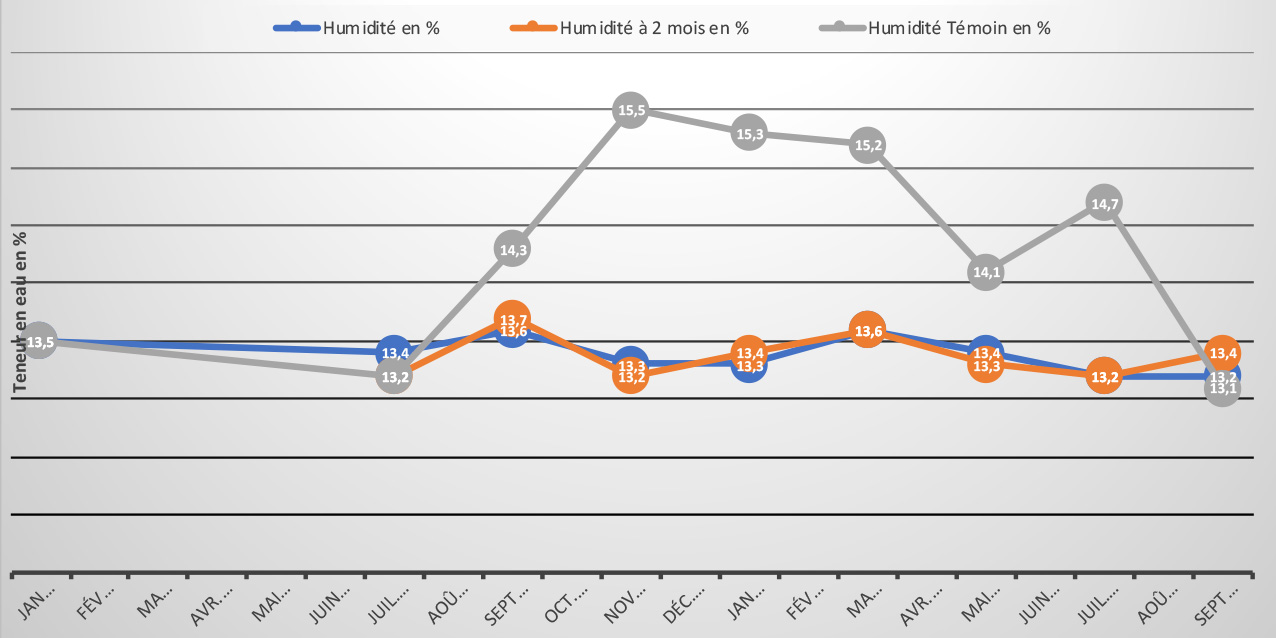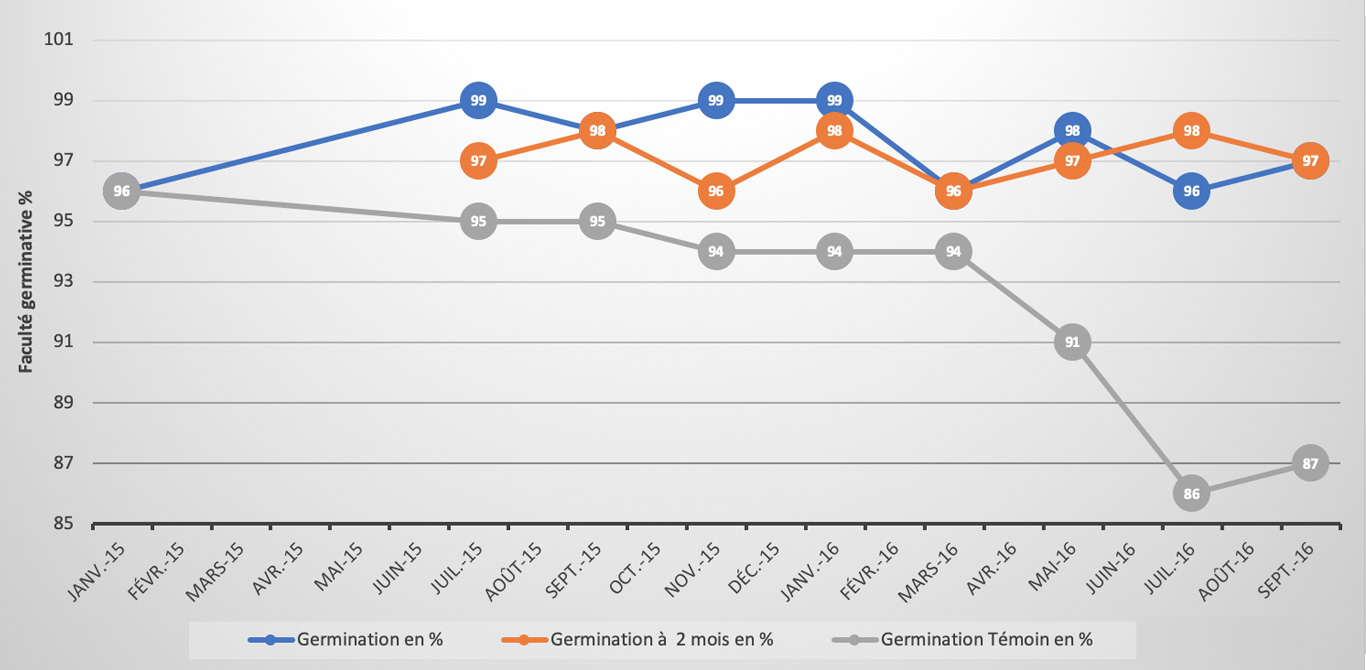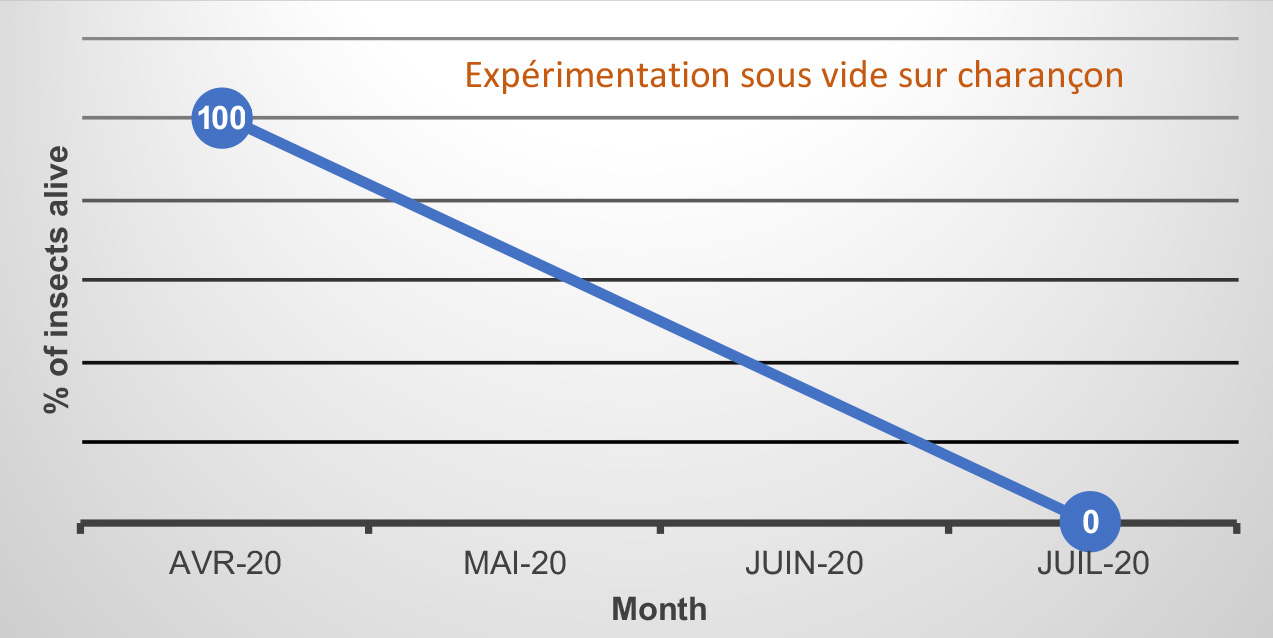VACUUM TECHNOLOGY
CONSO’PACK
SEALING TECHNOLOGY
Things to keep in mind
TAMIA PACK®’s expertise in vacuum packing technology is the result of its rigorous R&D efforts:
- In-depth preliminary literature study
- Unprecedented experimentation in this area since 2014 and still ongoing
- Demonstration of the technical, environmental and energy benefits of vacuum packing:
the SAFET’HY® Process - Packing of over 25,000 T
- A solution for organic grains and seeds
Why use sealed bag vacuum packing technology?
The operators of our founding company, ASUR Plant Breeding, had to manage their stock and ensure proper conservation to maintain its commercial value over time. Those of you who work in the seed or grain industry share these same concerns.
In the case of seeds, special attention is paid to germination capacity but also to limiting the development of insect populations. For grain, the focus is more on freshness and pesticide-free insect control.
Studies and experiments
The preliminary results confirmed the importance of the following elements in maintaining a high germination rate:
- The vital role of the quality and maturity of harvested seeds and harvesting conditions.
- The temperature and relative humidity of the surrounding air during storage. The development of pests, insects and molds in particular is very closely related to these two parameters.
- In order to keep the germination rate high, the moisture level of the seed must be kept stable throughout the entire storage period.
Stabilization of seed moisture content depends directly on the absence of significant variations in the humidity and temperature of the ambient air. Each level of seed moisture is associated with a unique concentration of water vapor in the air. Seeds react like a sponge to changes in the relative humidity of the storage environment, i.e. they become wetter or dryer in response to fluctuations in moisture levels of the surrounding air. These repeated variations have a negative impact on the germination rate.
Selecting a vacuum packing technology
With a sense of curiosity, open-mindedness and rigor, ASUR PB researchers then experimented with the main conservation approaches:
- in closed and ventilated cells with forced cold and dry air
- in hermetically sealed plastic boxes
- in big-bags with internal vacuum bags and in soft tubular silos on the ground
It became clear that removing all air (or limited residual oxygen) was the most sensible- and least energy intensive – solution to protect grain from gas exchange. Under these vacuum conditions, seeds and grains are best protected from fluctuations in the external environment and from insect attacks. This requires a moisture-proof, airtight and sufficiently thick container to create an airtight system.
In 2015, our research focused on a heat-sealable pouch composed of several aluminum-based layers providing extremely efficient high-barrier protection to external humidity and oxygen.
COMPARISON OF STORAGE IN AMBIENT AIR AND UNDER VACUUM ON % HUMIDITY
Observation: unprotected seeds take up moisture during the winter period
-
Grey curve: change in the moisture content of the control grain stored under normal conditions in a crate. Moisture content in the control grain rose sharply at the start of Winter, a very wet period in the north.
-
Blue curve: Change in the moisture content of grain stored in a vacuum. Moisture content was measured when the containers were opened. Very little variation was observed.
-
Orange curve: Change in the moisture content of grain stored in a vacuum. Moisture content was measured two months after opening the vacuum packing. Remarkably, moisture levels remained stable after two months.
Once seeds are vacuum-packed, they are no longer subject to variations in the external environment.
Furthermore, the oxygen-depleted atmosphere surrounding them is stabilized as is their moisture content.
COMPARISON OF STORAGE IN AMBIENT AIR AND UNDER VACUUM ON THE GERMINATION RATE
Observation: after 15 months, the germination of unprotected seeds decreases
-
Grey curve: control sample stored in ambient air. Seeds were subject to variations in moisture and temperature. Moisture content of the seeds rose in Autumn and Spring. Initially, the germination rate declined slowly and then dropped sharply in early Spring.
-
Blue curve: vacuum-packed grain; measurements taken at the time bags were opened. The seeds maintained their germination rate while their external environment underwent exactly the same variations as the control. They remained perfectly stable after one year.
-
Orange curve: vacuum-packed grain; measurements taken two months after bags were opened. Coinciding with stable moisture levels, the germination rate also remained the same over time. These findings mean that seed can be manufactured early and will remain perfectly stable until sowing.
To the delight of farmers, we found that large batches of seed marketed after four years of storage following the SAFET’HY Process were just as vigorous and exhibited the same germination rate as more recent seed.
THE SAHET’HY PROCESS ELIMINATES INSECTS IN 99% OF CASES
The vacuum allows a significant reduction of oxygen:
- The insects are trapped in a compact structure.
- Unfavorable environment for eggs and larvae.
- CO2 injection is possible for an even faster effect.
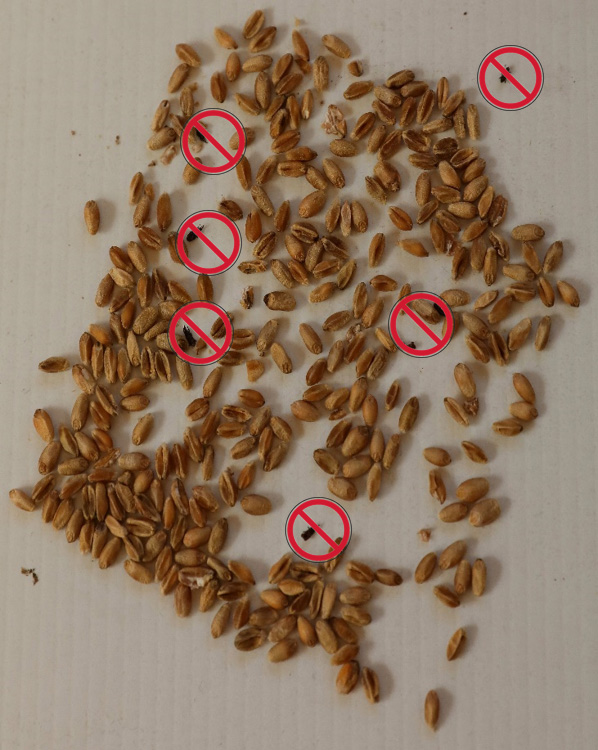
With the global rise in temperatures, increasing pesticide restrictions and the danger that fogging entails, having a solution to deal with insects while preserving germination rate (seeds) and grain quality (food) takes on strategic importance. This is all the more important for the organic and other food products that must be stored or marketed.
Vacuum packing reduces available oxygen therefore suffocating insects and destroying eggs and larvae. But that is not all. Vacuum compression traps adults between heavy inert masses from which they try to free themselves in search of food. Hence, insects that are not crushed die of suffocation or starvation.
Additional benefits against rodents:
During the five years of research and the practical experience of packaging over 15,000 tons of seed and grain (as of February 2021), we have never been bothered by insect infestations or rodents. In terms of the latter, the high barrier vacuum packing stops all gas exchange thus eliminating any sort of odor: no smell, no attack! Even if rodents, often present in storage areas, are generally well controlled, not having to constantly monitor them or apply dangerous chemical treatments would make things easier in terms of safety and financial impact.
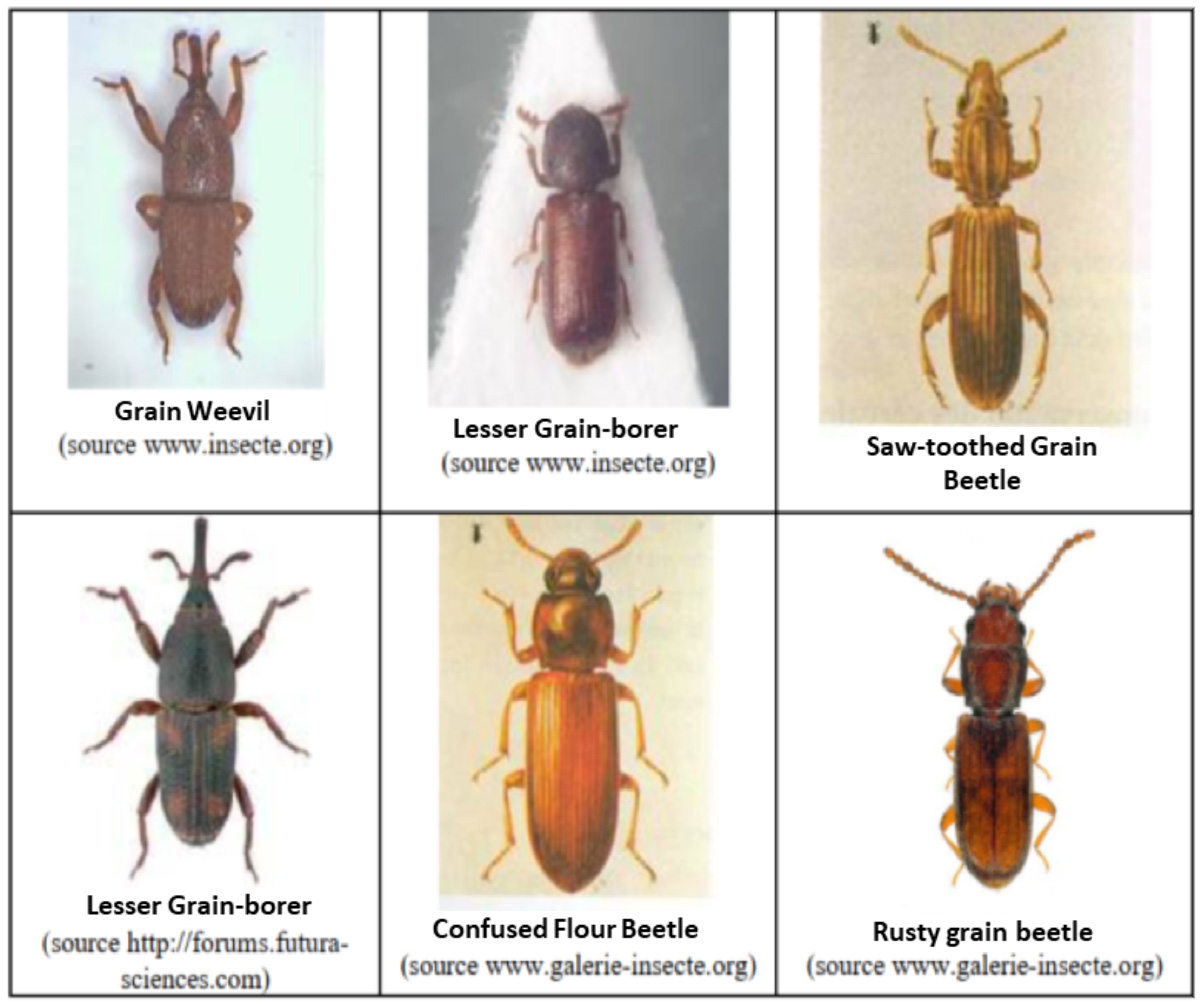
The graph represents this phenomenon: it shows the percentage of living insects over time.
In April we vacuum packed wheat batches heavily infested with weevils using the SAFET’HY Process.
Three months later we opened the bags and found that all the insects had died.
We continued our experiments on the effect that vacuum packing has on several different insect species present in storage areas (grain weevils, rice weevils, lesser grain borers, saw-toothed grain beetles), and even some field pests (bean weevils), and our R&D team found that the insects die within two to four weeks. Indeed, no surviving insect was found in any of the samples taken or small vacuum bags opened.
These results were obtained without injecting inert gas which is not necessary in the vast majority of cases. It is, nevertheless, always possible with the equipment offered by TAMIA PACK, especially when circumstances so require.
Vacuum packing = 0 insects with no pesticides!
